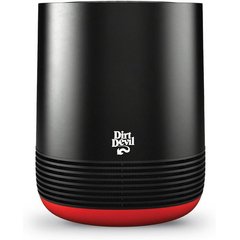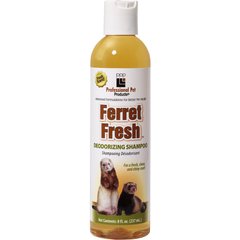Abnormality of Incisor Teeth in Rabbits
Incisor Malocclusion and Overgrowth in Rabbits
A rabbit's teeth usually grow throughout its life, and a high fiber diet, with foods that warrant heavy chewing, are required for proper alignment and functioning, as the coarse foods help to keep the teeth at a manageable length. Occlusion, the fitting together of the teeth of the upper and lower jaws when the mouth is closed, can be hampered by overgrowth of one or more of the teeth, a condition referred to as malocclusion (where the prefix mal- joined with -occlusion refers to the ill-fitting shape of the teeth).
If elongation of the cheek teeth occurs, complete closure of the mouth cannot be achieved, and the upper incisor teeth are prevented from coming into contact with the lower incisors, leading to excessive growth of the incisors. The incisor teeth can grow as much as one mm a day if left unopposed by the opposite jaw – the meeting/occlusion of the teeth, along with a diet high in roughage, acts as a natural inhibitor of the tooth's growth.
Symptoms and Types
- Readily visible teeth
- Excessive drooling
- Tooth grinding
- Nasal discharge
- Food drops out of mouth
- Preference for softer foods
- Preference for a water bowl over a sipper bottle
- Decreased appetite or complete loss of appetite (anorexia)
- Weight loss
- Excessive tear production
- Facial asymmetry or exophthalmos (protrusion of eyeball)
- Pain (i.e., reluctance to move, depression, lethargy, hiding, hunched posture)
- Unkempt hair coat due to lack of self grooming
Recommended Products
Causes
There are many factors that can lead to cheek teeth overgrowth. The most significant contributing or exacerbating factor is a diet that contains inadequate amounts of the coarse roughage material that is required for properly grinding the tooth's surface, allowing the incisors to grow into the surrounding soft tissues, damaging the tissue and even leading to secondary bacterial infections in the mouth. Dwarf and lop breeds have been found to be at an increased risk for congenital malocclusion, as they are more prone to skeletal abnormalities.
Diagnosis
Your veterinarian will perform a thorough physical exam on your rabbit, differentiating between overgrown incisors and other tumors of the mouth of skull. Visual diagnostics will include skull and face X-rays, and computed tomography (CT) for better viewing of abnormalities. A fine needle aspiration (drawing and analyzing the fluid from swelling) will be taken for laboratory testing. A complete blood profile will be conducted, including a chemical blood profile, complete blood count, urinalysis, and a bacterial culture to determine the exact strain of bacteria so that the appropriate antibiotics can be prescribed.
Treatment
Treatment, whether outpatient or inpatient, will be based on the severity of the symptoms. Fluids may need to be given if your rabbit is dehydrated, and intravenous nutrition if your rabbit has been suffering from a condition of anorexia. Appropriate antibiotic therapy will be given with caution. This is not the primary choice of treatment. If necessary, surgery may be performed to trim the teeth, extract teeth that cannot be repaired, or drain abscess that have occurred as a result of the malocclusion.
In some cases, the intestinal tract may have been affected as well, and surgery may be required to remove solids from the intestine. After you have returned home, monitor your rabbit's appetite and production of feces, and report any abnormalities to your veterinarian immediately, as death may occur due to sudden and severe complications.
Living and Management
A warm, quiet environment will need to be set aside for your rabbit to recover in, but encourage a return to activity as soon as possible, as activity can greatly enhance recovery. If the rabbit is not too tired, encourage exercise (hopping) for at least 10-15 minutes every 6-8 hours.
After the initial treatment, most rabbits will require assisted feeding for 36-48 hours postoperatively. Keep fur around the face clean and dry. It is important that your rabbit continue to eat during and following treatment. Encourage oral fluid intake by offering fresh water, wetting leafy vegetables, or flavoring water with vegetable juice, and offer a large selection of fresh, moistened greens such as cilantro, romaine lettuce, parsley, carrot tops, dandelion greens, spinach, collard greens, and good-quality grass hay. Feed timothy and grass hay instead of alfalfa hay, but also continue to offer your rabbit its usual pelleted diet, as the initial goal is to get the rabbit to eat and to maintain its weight and nutritional status. If your rabbit refuses these foods, you will need to syringe feed a gruel mixture until it can eat again on its own. Unless your veterinarian has specifically advised it, do not feed your rabbit high-carbohydrate, high-fat nutritional supplements.
Recurrence is likely, so it is important to provide adequate tough, fibrous foods such as hay and grasses to encourage normal wear of teeth. Lifelong treatment, with periodic teeth trimming, is often required, usually every 1-3 months. This, in turn, will require both an investment in time and money on your part.
Euthanasia may be warranted with severe or advanced disease, especially in rabbits that are in constant and/or severe pain, or cannot eat.



